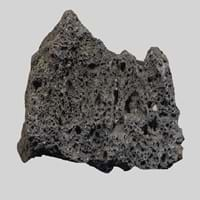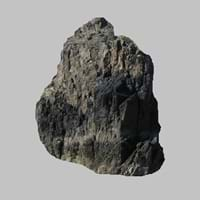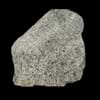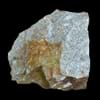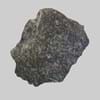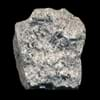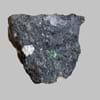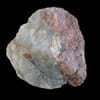Definition
Scoria is a dark-colored extrusive igneous rock with abundant round bubble-like cavities
Metapelite is an old and currently not widely used field geological term for a clay rich fine-grained clastic sediment or sedimentary rock, i.e. mud or a mudstone
Discoverer
Unknown
Unknown
Etymology
From late Middle English (denoting slag from molten metal), from Greek skōria refuse, from skōr dung
From Pelos or clay in Greek
Class
Igneous Rocks
Metamorphic Rocks
Sub-Class
Durable Rock, Medium Hardness Rock
Durable Rock, Medium Hardness Rock
Group
Volcanic
Not Applicable
Other Categories
Fine Grained Rock, Opaque Rock
Coarse Grained Rock, Fine Grained Rock, Medium Grained Rock, Opaque Rock
Texture
Vesicular
Foliated
Color
Black, Brown, Dark Grey to Black, Red
Dark Greenish - Grey, Green, Light Green, Light Greenish Grey
Durability
Durable
Durable
Scratch Resistant
Yes
Yes
Appearance
Glassy and Vesicular
Banded
Interior Uses
Decorative Aggregates, Interior Decoration
Decorative Aggregates, Interior Decoration
Exterior Uses
Garden Decoration, Paving Stone
As Building Stone, As Facing Stone
Other Architectural Uses
Curbing
Curbing
Construction Industry
Cement Manufacture, Construction Aggregate, for Road Aggregate, In landscaping and drainage works
Cement Manufacture, Construction Aggregate, for Road Aggregate
Medical Industry
Not Yet Used
Not Yet Used
Antiquity Uses
Artifacts, Monuments, Sculpture
Artifacts
Commercial Uses
As a traction material on snow-covered roads, Creating Artwork, High-temperature insulation, In gas barbecue grills
Commemorative Tablets, Creating Artwork
Types
Not Available
Not Available
Features
Available in Lots of Colors and Patterns, Generally rough to touch, Surfaces are often shiny
Easily splits into thin plates, It is One of the Oldest, Strongest and Hardest Rock
Archaeological Significance
Monuments
Used
Not Yet Used
Famous Monuments
Data Not Available
Not Applicable
Sculpture
Used
Not Yet Used
Famous Sculptures
Data Not Available
Not Applicable
Figurines
Used
Not Yet Used
Formation
Scoria forms when magma containing huge amount of dissolved gas flows from a volcano during an eruption.
Due to change in environmental conditions, rocks are heated and pressurized deep inside the Earth's surface. Metapelite is formed from the extreme heat caused by magma or by the intense collisions and friction of tectonic plates.
Mineral Content
Apatite, Biotite, Calcite, Feldspar, Hematite, Hornblade, Ilmenite, Magnetite, Olivine, Pyroxene, Quartz, Silica
Albite, Chlorite, Quartz
Compound Content
Ca, NaCl
Aluminium Oxide, CaO, MgO
Types of Metamorphism
Burial Metamorphism, Cataclastic Metamorphism, Contact Metamorphism
Not Applicable
Types of Weathering
Biological Weathering, Chemical Weathering, Mechanical Weathering
Biological Weathering, Chemical Weathering, Mechanical Weathering
Types of Erosion
Chemical Erosion, Coastal Erosion, Glacier Erosion
Chemical Erosion, Coastal Erosion, Water Erosion, Wind Erosion
Grain Size
Fine Grained
Medium to Fine Coarse Grained
Fracture
Conchoidal
Fibrous
Porosity
Highly Porous
Highly Porous
Luster
Subvitreous to Dull
Earthy
Cleavage
Perfect
Not Available
Toughness
2.1
Not Available
Specific Gravity
Not Available
3.4-3.7
Transparency
Opaque
Opaque
Density
Not Available
0-300 g/cm3
Specific Heat Capacity
Not Available
Resistance
Heat Resistant, Impact Resistant, Pressure Resistant, Wear Resistant
Heat Resistant, Impact Resistant, Pressure Resistant
Deposits in Eastern Continents
Asia
Afghanistan, Indonesia, Japan, Russia
Not Yet Found
Africa
Ethiopia, Kenya, Tanzania
Western Africa
Europe
Greece, Hungary, Iceland, Italy, Turkey
United Kingdom
Others
Not Yet Found
Not Yet Found
Deposits in Western Continents
North America
Bahamas, Barbados, Canada, Costa Rica, Cuba, Jamaica, Mexico, USA
Not Available
South America
Argentina, Chile, Ecuador, Peru
Brazil, Colombia, Ecuador
Deposits in Oceania Continent
Australia
New Zealand, Western Australia
Central Australia, Western Australia
